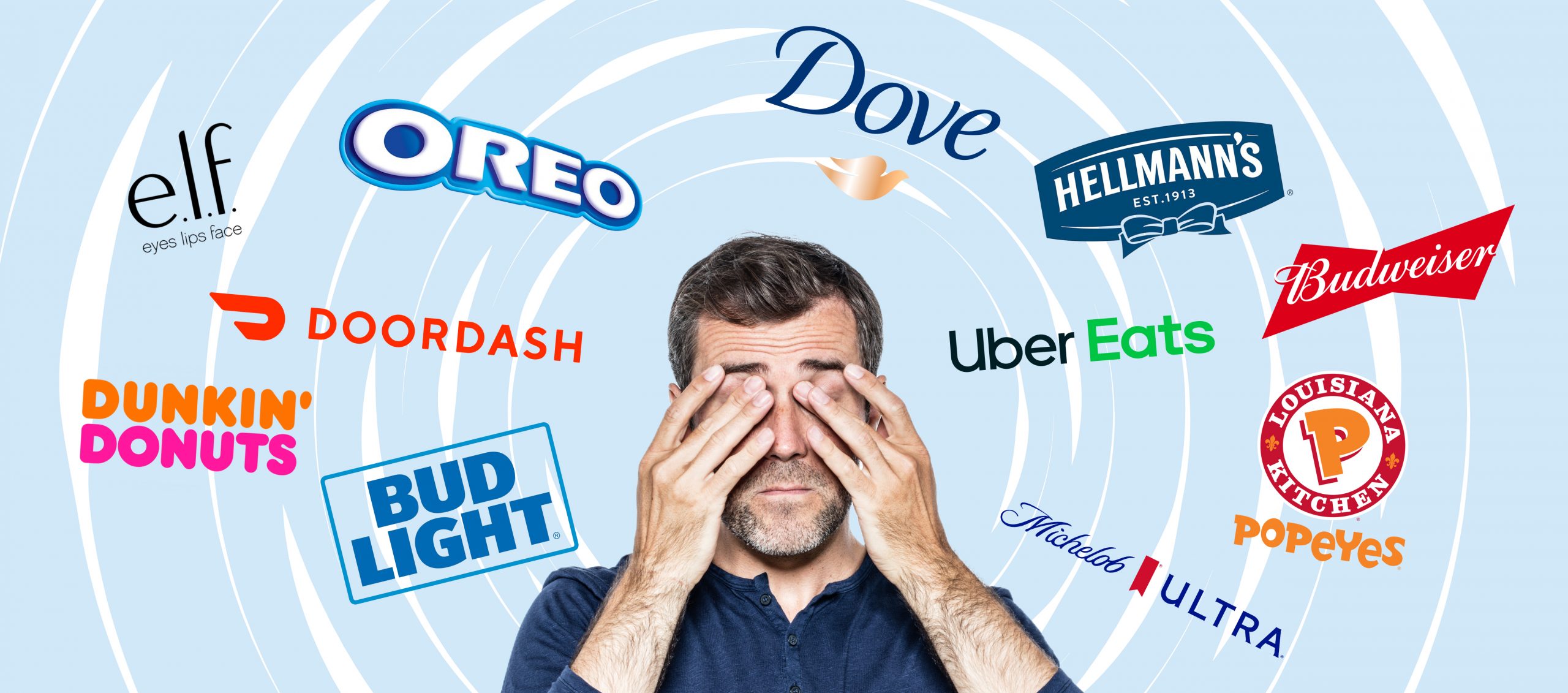The Big Story: Your 2024 Super Bowl Commercials
See what advertisers do with a media buy that cost $233,333 per second.
Super Bowl’s Branding Hangover
How can an evocative, hilarious, memorable, buzz-worthy, slick television ad seen by more than 100 million people be a disaster for your brand?
Easy. If you can’t deliver IRL the experience you’re selling, you’ve got one expensive catastrophe. It’s the kind of bait-and-switch that can leave you and your customers with an unfortunate hangover from the previous night’s advertising party.
More than 110 million people are expected to watch Super Bowl LVIII, including the largest number of women viewers ever (thanks, Taylor). Marketers will spend $7 million a pop for 30 seconds of national airtime during this year’s Super Bowl. Despite the hefty price tag, all available slots have sold out, says CBS.
“Even as many businesses are being more disciplined with the money they have for marketing…the cost of a Super Bowl ad continues to go up,” says The New York Times.
“The reason is simple: There is no opportunity guaranteed to reach more people than the Super Bowl, and the slice of every other pie keeps shrinking.”
And who doesn’t hate shrinking pies?
In the weeks of so important pre-advertising advertising, the companies paying millions for your eyeballs include a stellar health food line-up of Super Bowl mainstays: Oreos, Budweiser, Bud Light, Michelob, Hellman’s, Popeye’s and Dunkin Donuts, to name a few. And just so you don’t overexert yourself getting those products from store to lips, there’s Uber Eats and DoorDash.
Oh, and there are newcomers, too, such as L’Oreal, Dove and e.l.f. Cosmetics, looking to build on their big reputation. No one wonders why.
So, lots of money invested. Sky-high production values. Movie stars. Oscar-winning directors. Taylor Swift. More female viewers than ever. Biggest television audience in the history of history (short of, well, landing on the moon). And there’s a football game, to boot.
What could go wrong? Everything.
For all the breathless hyper-hype, “Ignore it all,” says Kevin Krim over at Forbes. “In a world where brands often invest tens of millions in a Super Bowl campaign, it’s less important to listen to what consumers say about the ads they see and far more important to measure what they do.” Those are Krim’s italics, by the way.
It’s all about the action consumers take in response to the ads, as Krim might write, with an extra font style for extra emphasis.
After all, every investment in branding – and every marketing effort – should be intended to persuade the target audience to engage with your service or product. What’s the CTA? To call. To learn more. To buy. To join. To support.
To remain loyal.
Every advertisement sets expectations for an experience. Every ad is a test: Are you ready to provide the experience you’re selling? Can you deliver it? Are you ready for it?
The steps a customer might take on the journey from a Clio-award-winning campaign to the experience of an ER, or a clinic, or a call center, are big strides. Sometimes a leap.
Mind the gap. A misstep from ad to experience can be far more costly to customer satisfaction and their long-term loyalty than the expense of any media buy.
After all, creating a great brand is hard.
But building and sustaining a great customer experience is harder.
“Customer experience is the internal and subjective response customers have to any direct or indirect contact with a company,” says the Harvard Business Review in one of its foundational and dry descriptions of CX from way back when.
Any direct or indirect contact with a company? What do you mean?
“Direct contact generally occurs in the course of purchase, use, and service and is usually initiated by the customer,” write the authors. “Indirect contact most often involves unplanned encounters with representations of a company’s products, services, or brands and takes the form of word-of-mouth recommendations or criticisms, advertising, news reports, reviews, and so forth.”
For healthcare leaders, your experience is broadly defined in the care you deliver.
It’s delivered by and through your caregivers, of course, and by your techs, and receptionists and websites and invoices. It’s the cost of care and the process of scheduling of appointments. And the food. It’s what your nurses say when they run into their neighbors at the grocery store, too. When family and friends ask them, “How was your day?” On and on. You know the interactions that collude to create the experience of, well, you. And when the interactions are good, well sparks fly.
Bad experiences are experiences, too, and costly. Organizations that set expectations but can’t deliver them don’t remain neutral in the eyes of consumers. They take hit after hit to their trust, leading to death by a thousand cuts.
“Customer dissatisfaction is widespread and, because of customers’ empowerment, increasingly dangerous,” says HBR, referring to all industries. “Corporate leaders who would never tolerate a large gap between forecasted and actual revenues prefer to look the other way when company and customer assessments diverge.”
Avoid divergence. It’ll only create bad blood. Invest in the convergence where the experience you deliver and what you promote meet. Avoid the hangover.
Don’t believe us? Consider the reminder from one Taylor Swift, a formidable brand in her own right who has shaped the experience of this year’s Super Bowl: “I remember what you said last night. And I know that you see what you’re doing to me.”
Yes, what you say is deeply connected to what you do. A lot of customer expectations are being sold through this year’s multimillion-dollar Super Bowl ads. It’s invested for a reason. With all the pre-game chatter and social media legwork surrounding them, advertisers say they see $4.60 returned for every dollar spent, per one research firm. It’s a gold rush with a nice ROI.
Watch the Super Bowl commercials live or at your leisure through the magic of YouTube. And as you watch, ask this experiential question: Do Doritos really make you that happy?
Contributors: Abby McNeil, Emily Shirden, Pattie Cuen, Emme Nelson Baxter, David Shifrin
Image credit: Shannon Threadgill




